A new experiment with airlift drilling is performed at the WOT. A motor of a petrol auger was used to drive the drill stem of the airlift drilling method. This produced a continuous rotational movement, so two couplings were required. One for the outlet of the drilling fluid and air mixture. Another one to couple the pressurized air hose to the drill shaft.
The main advantage of the system compared to the previous manual setup was the increased drilling speed. The maximal speed was measured to be 12 meter per hour. The record with manual shaft rotation was 7.5 meter per hour. However, the average speed of the whole borehole was only 5.4 meter
per hour. This is not a very large increase, compared to the 4.5 meter per hour during manually rotating in an earlier test.
This is mainly because changing the pipes was more time consuming since the motor was attached to them. Also, starting the petrol engine was hard, as the engine was unwilling and at an unpractical location for starting. The couplings for air and water, which were finished a day before the test, performed perfectly. The air coupling was not leaking up to a pressure of 8 bar. Thanks to Hedzer and Haye who helped to turn them to specifications.
There is the option to make a new test setup with a proper rig to guide the motor assembly. Also, an updated version of the air and water coupling can be made, where the length of the coupling assembly will be decreased (currently ~45cm long). A pipe clamp can be mounted on the rig, to hold the pipes during adding and removing. Changing pipes is then preferably done with three-meter pieces at the time, to minimize the time spend on it. The average speed of drilling can come very close to the 12 meter per hour (in Dutch soil) with these upgrades.

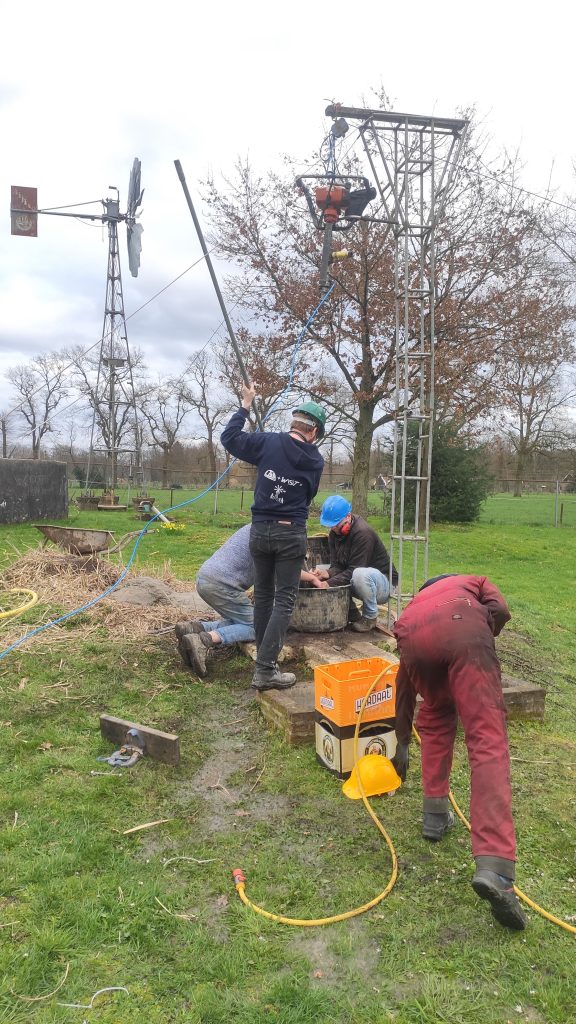
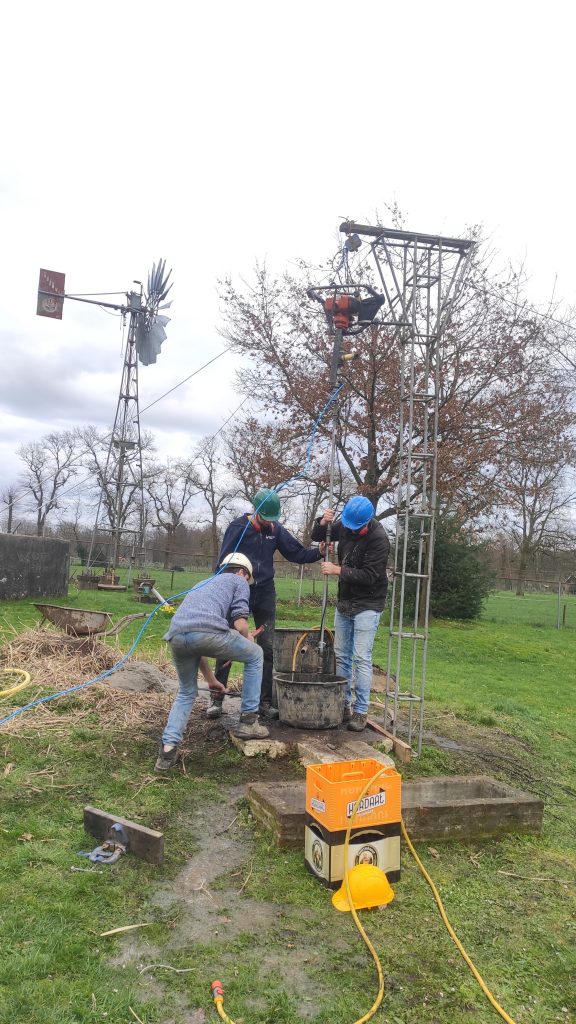
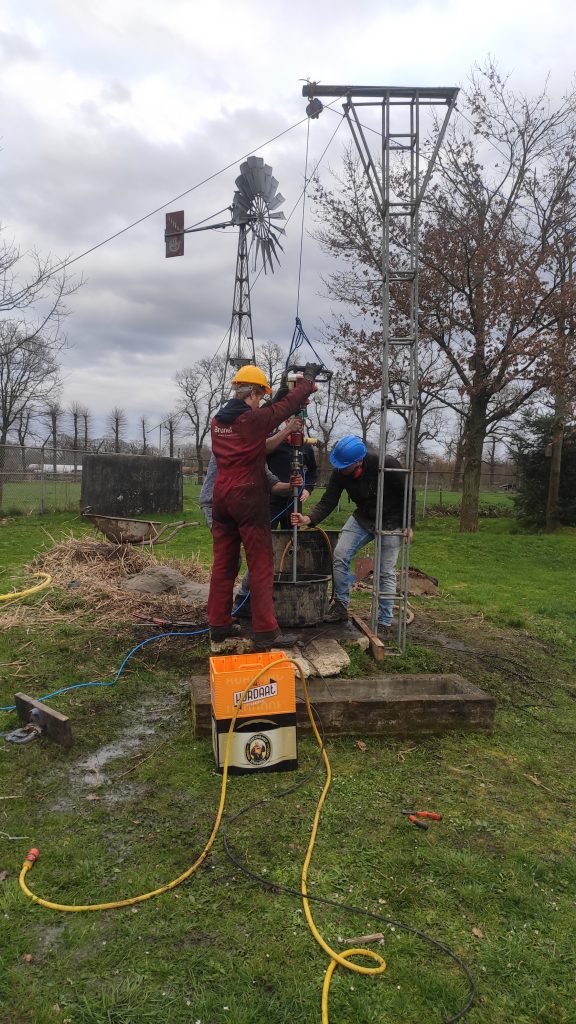
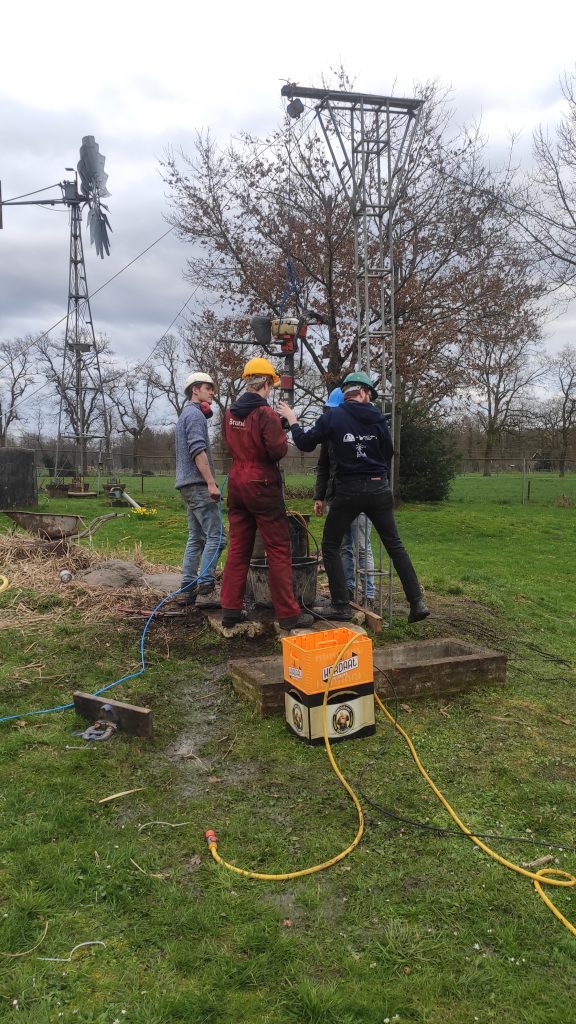
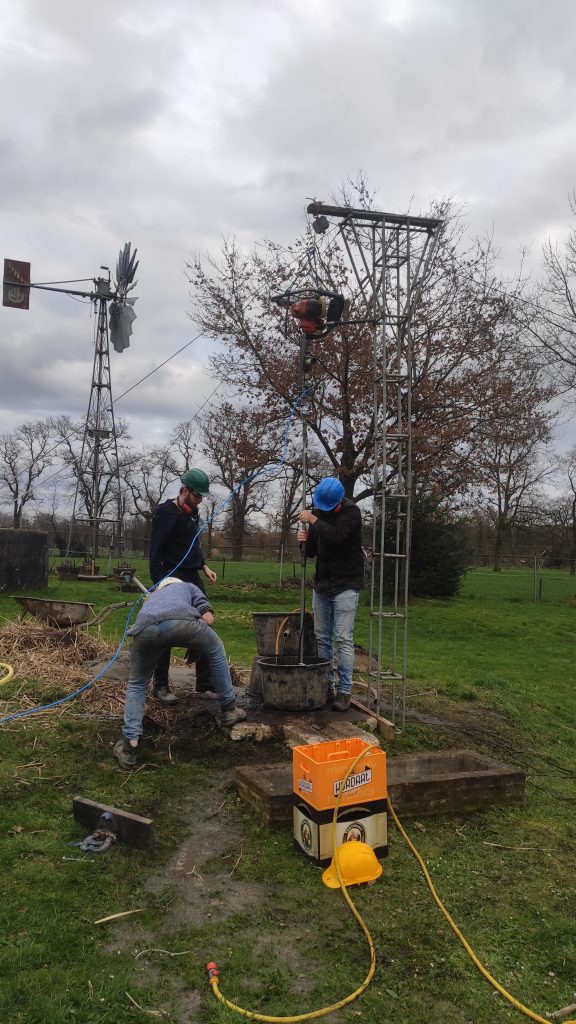
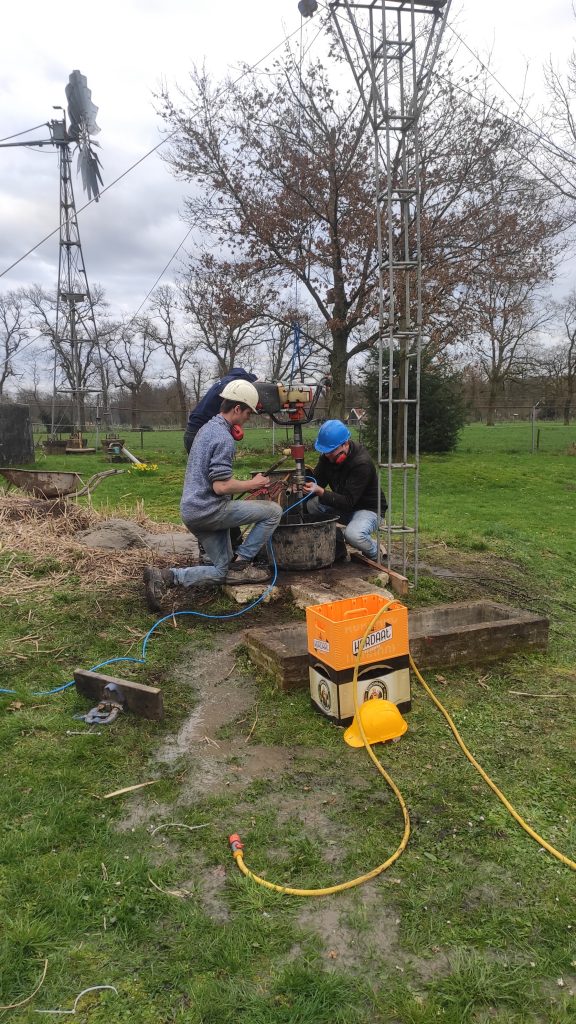
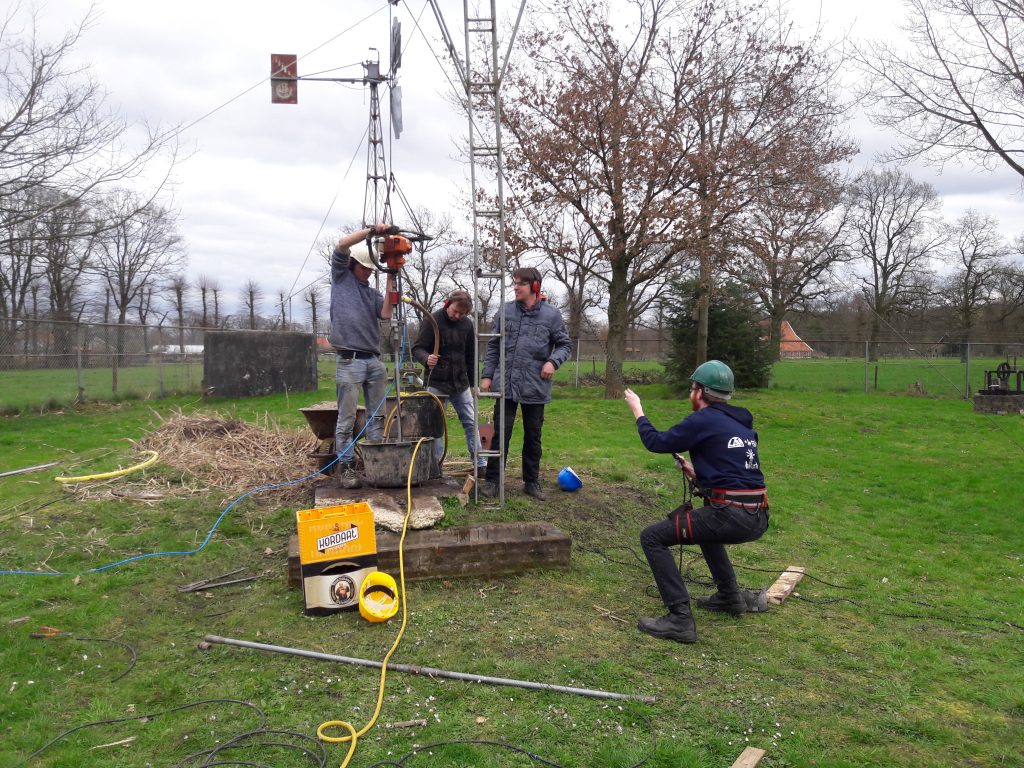
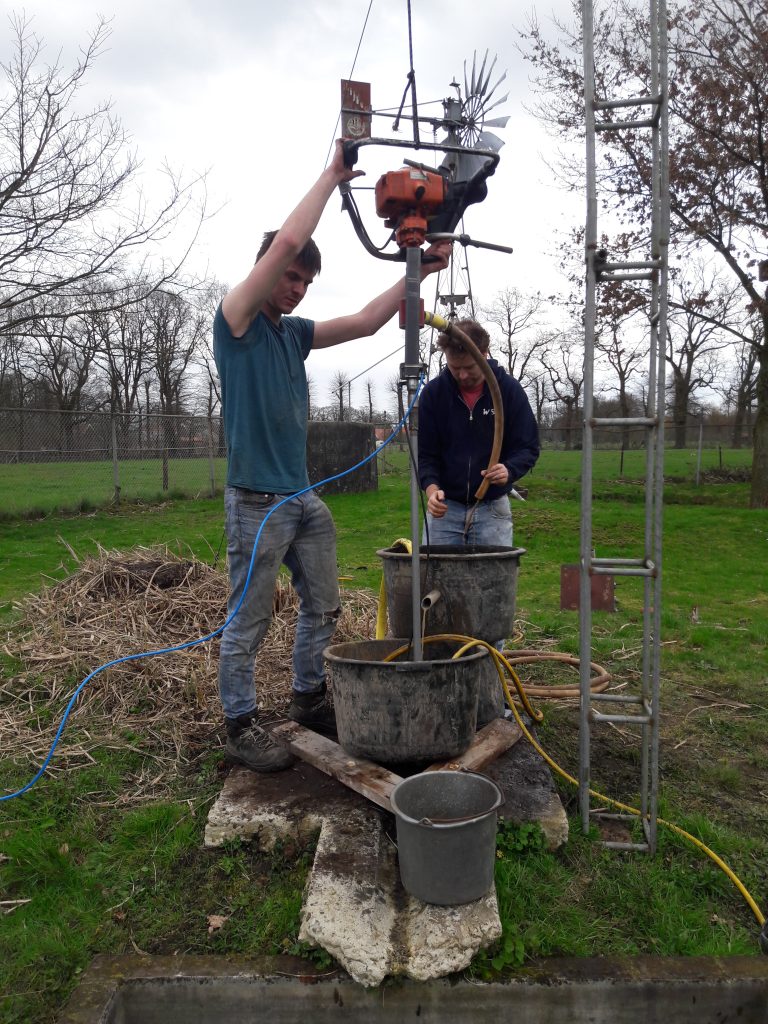
I am very interested in this technology for water problem in Sierra Leone. I was born there and live in the USA. I am interested in teaching it to my village and to help train young men who are unemployed to use it to help bring water to there farms and homes. Please contact me to discuss how we can work together. I will return to Sierra Leone at the end of January and would like to work with your organization.
Dear Friends:
I am very impressed with work you are doing.
I am a retired Canadian engineer helping some village folks in Eastern Europe to get water out of the ground.
We would very much appreciate your sharing designs for:
a) A coupling (swivel) for the outlet of the drilling fluid and air mixture.
b) A coupling (swivel) for the pressurized air hose to the drill shaft and drill bit.
We find it here is very difficult to get those items at the reasonable price and as an appropriate light design.
Many thanks for you help and hoping we will share our experience with you as well.
Kind regards,
Peter
Hi Peter,
Thank you for reaching out. I just sent you an email.
Hi Idris,
That sounds very interesting, I sent you an email
Good job guys!
I discovered WOT channel recently on YouTube and I am amazed by your works and researches especially their potential impact on remote populations access to water through drilling their own well.
I leave in Prague but back on the Abomey plateau in Benin where I originated from people still rely on the rainy season to start growing crops. Climate change is complicating that agricultural planning more and more…
Ask you already answered to Peter on January 17, 2022 it would be helpful to
if you could provide the designs for:
”
a) A coupling (swivel) for the outlet of the drilling fluid and air mixture.
b) A coupling (swivel) for the pressurized air hose to the drill shaft and drill bit.
”
I intend to help with drilling a water well during my visit this spring and will be pleased to share my experience afterwards.
Thanks in advance for your help
Armand
I am interested in this method of drilling. The bottom of the well casing in my property (6” casing) has filled in over the past 40 years. The well is approximately 90-100’ (30 meters) down. I would appreciate any designs or mock up drawings that you could provide for the motorized drill type application.
Hi. This is a wonderful. Actually I would call it a change maker. Kindly send me details on how to assemble it. This will help my commute big way. But one question please. What happens if I encounter a rock down the path? In the video I see you digging out sand only.
Thanks .
I would really appreciate it if you would share your drawings for:
(a) A (swivel) coupling for the outlet of drilling fluid and air mixture.
b) A coupling (swivel) for the pressurized air hose to the drill shaft and drill bit. Thank you. Dan
Very interesting. What kind of flow and pressure are you getting out of the compressor?
Have you seen the site drillawell dot com? It’s similar to what you’re doing in that pressurized air is used to bring up the tailings. However, he uses a pneumatic drill on the bottom of the pipe to drill the hole, the exhaust air from the drill is then re-used. Since he’s selling plans he doesn’t reveal a lot on the website about how it works. With the pneumatic drill the operator doesn’t have to apply much force and he uses PVC pipe.